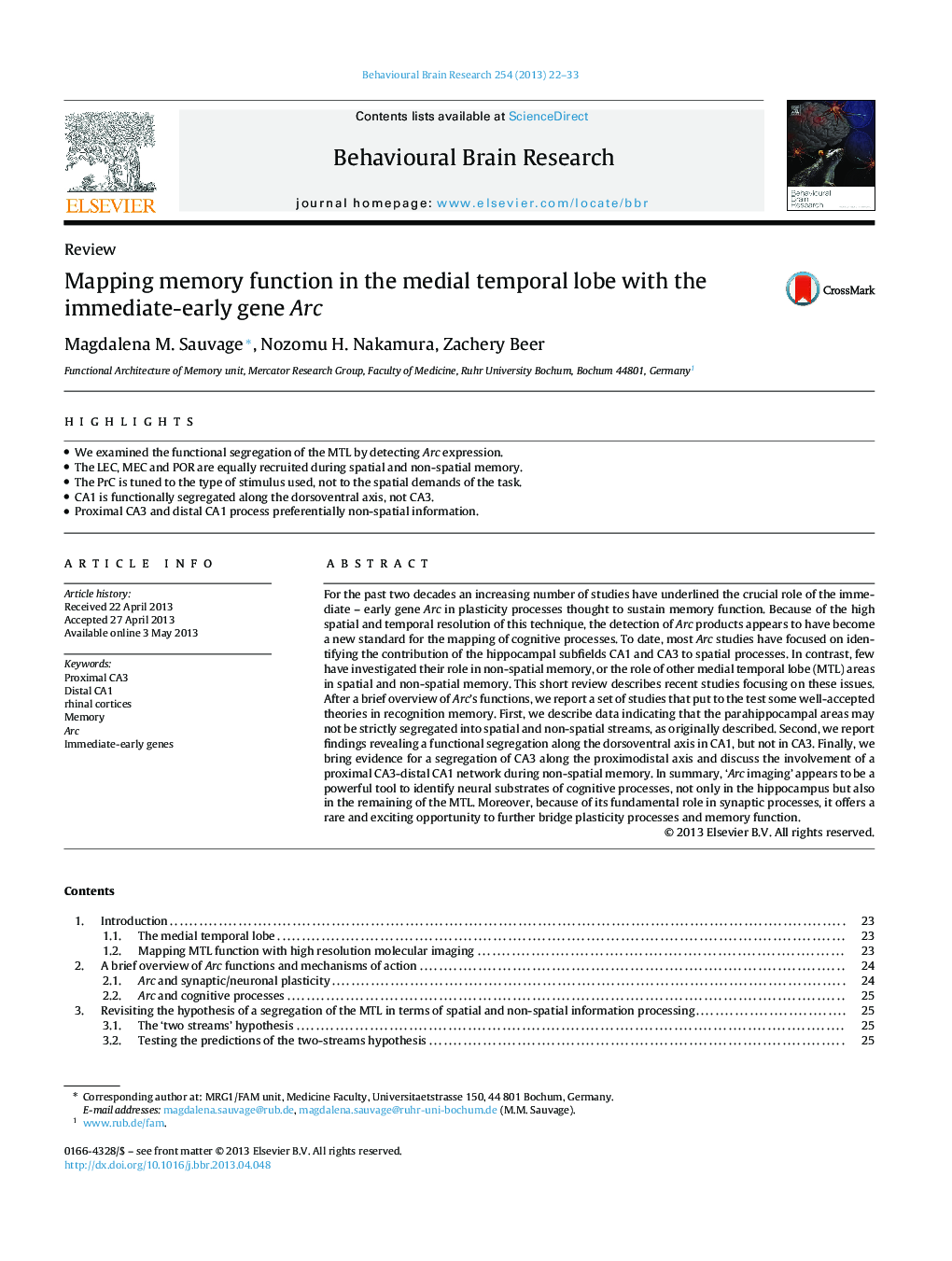| Article ID | Journal | Published Year | Pages | File Type |
|---|---|---|---|---|
| 4312648 | Behavioural Brain Research | 2013 | 12 Pages |
•We examined the functional segregation of the MTL by detecting Arc expression.•The LEC, MEC and POR are equally recruited during spatial and non-spatial memory.•The PrC is tuned to the type of stimulus used, not to the spatial demands of the task.•CA1 is functionally segregated along the dorsoventral axis, not CA3.•Proximal CA3 and distal CA1 process preferentially non-spatial information.
For the past two decades an increasing number of studies have underlined the crucial role of the immediate – early gene Arc in plasticity processes thought to sustain memory function. Because of the high spatial and temporal resolution of this technique, the detection of Arc products appears to have become a new standard for the mapping of cognitive processes. To date, most Arc studies have focused on identifying the contribution of the hippocampal subfields CA1 and CA3 to spatial processes. In contrast, few have investigated their role in non-spatial memory, or the role of other medial temporal lobe (MTL) areas in spatial and non-spatial memory. This short review describes recent studies focusing on these issues. After a brief overview of Arc's functions, we report a set of studies that put to the test some well-accepted theories in recognition memory. First, we describe data indicating that the parahippocampal areas may not be strictly segregated into spatial and non-spatial streams, as originally described. Second, we report findings revealing a functional segregation along the dorsoventral axis in CA1, but not in CA3. Finally, we bring evidence for a segregation of CA3 along the proximodistal axis and discuss the involvement of a proximal CA3-distal CA1 network during non-spatial memory. In summary, ‘Arc imaging’ appears to be a powerful tool to identify neural substrates of cognitive processes, not only in the hippocampus but also in the remaining of the MTL. Moreover, because of its fundamental role in synaptic processes, it offers a rare and exciting opportunity to further bridge plasticity processes and memory function.
